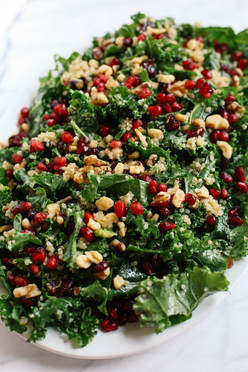 Winter Kale Quinoa Salad Ingredients:
This fall recipe is from one of my favorite cookbooks, '7 Center's Ayurvedic Cookbook' compiled by Ayurvedic Chef, Mira Murphy. You can use other varieties of squash or even pumpkin to add more seasonal flare. Enjoy! 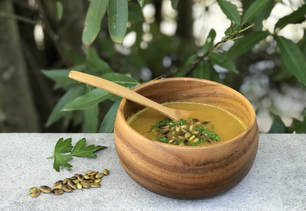 Butternut Squash Soup | Serves 6 Ghee 2 tsp garam masala 1/2 tsp nutmeg few pinches cayenne 1/2 tsp turmeric 1/2 Tbsp fresh ginger root (peeled and grated or diced) 1 medium sized butternut squash (peeled and cubed) 2 yams chopped into bite sized cubes 6 cups vegetable stock (homemade preferred), or water 2 tsp salt 2 tsp succanut 1/2 cup pumpkin seeds ***Cover the bottom of your pot with ghee and warm until melted. Add garam masala, nutmeg, cayenne, turmeric and fresh ginger and warm until fragrant (be careful not to burn the spices). Add the cubed squash and yams and stir until coated with ghee/spice mixture. Add the stock or water and bring to a boil. Simmer until the vegetables are soft. Meanwhile place the pumpkin seeds in a pan and heat until they become golden. Blend the soup with a hand blender or transfer in small batches into a blender. Serve hot and garnish each bowl with roasted pumpkin seeds and fresh parsley.  It's summer. It's hot. We need to cool down, somehow!? In Ayurveda, we don't recommend drinking iced beverages because cold foods and drinks can put out the digestive fire, known as agni. Instead, here is a very simple recipe that will reduce heat in the body and reduce the pitta dosha. Pitta becomes aggravated in the warmer months and it's important to incorporate calming and cooling practices to avoid agitation and other inflammatory symptoms. By taking care of our bodies and minds properly in each season we can smoothly transition from one to the next without discomfort. The more knowledge we have about our unique constitution and how we are effected by various climates and terrains, the easier it is to apply the wisdom of Ayurveda. Give this recipe a go and take a long exhale to enjoy the summer. Have fun and hydrate it up! xo **Sublime Cucumber Lime** 1 cucumber 1 lime pinch of sea salt aloe vera juice (optional) Pour purified water into a large pitcher (around 24oz.). Peel the cucumber partially or all the way and cut into small pieces. Squeeze the lime into the pitcher. Add a pinch of sea salt. I like Himalayan Salt, or Atlantic Grey for it's moisture content. These high mineral sea salt provide electrolytes that we often loose through sweat. You may also want to try adding aloe vera juice to your drink to increase the cooling effect. Aloe vera supports the liver, one of the pitta organs and is very purifying. If you are new to using aloe vera, try the Inner Fillet Juice since it's less bitter. We are happy to announce another "Wellness Hike" taking place this Sunday at Armstrong Redwoods State Natural Reserve, one of the most beautiful preserved redwoods forests groves on the northern California coast. We'll meet the morning of May 22nd and begin with about an hour hike. At the end of the hike we'll gather at the Forest Amphitheater in the park where we'll practice some gentle yoga for about 40 minutes, all levels are welcome. Then we will serve an full Ayurvedic meal, picnic style and enjoy our food and tea under the redwoods trees. It should be a be a wonderful day and you all are invited!
These kind of "Wellness Hike" events came about by wanting to provide people a full experience in nature, connected to the body and breath, and nourished by wholesome food. With all of us leading busy lives, we know that quiet time in nature can be the best reset and way to recharge ourselves. This event is intended to provide you with things that make most of us feel healthy and good ---time immersed in the natural elements, yoga-based movement, breath work, relaxation, a home cooked meal...etc. Yet, it's also intended to be a 'mini day retreat' unplugged from technology and the to-do list to just be with yourself and others and be filled with prana from these ancient trees (some of the them are 1300 years old). Of course, you're welcome to stay in the park as long as you want and make a whole day out of it. Here are some other details: *arrive at the Visitor Center parking lot by 9:30am *bring water, layers of clothes, and wear comfortable walking shoes *bring a yoga mat if you have one or we'll provide one for you *the Ayurvedic meal will have vegan and gluten-free options *kids are welcome over the age of 13 *groups of three or more can come for $30 each *no one is turned away for financial reason, donate whatever you can *we will have someone playing acoustic music at the end of the yoga class and through part of the meal *we'll be back to the Visitor Center parking lot by 1pm the latest I hope to see some of you this Sunday! To confirm you repsond to this event, call or text (707) 696-7425, or email [email protected]. ♥ ♥ ♥ It's not too late to sign up for our retreat this weekend! We're inviting all woman, daughters, and mothers to join us for our second day-long Silent Retreat at the Angela Center, Santa Rosa California. The day will be filled with meditation, medical qigong, walking the gardens and labyrinth, restorative yoga, yoga nidra, and time for quiet reflection. It will be a day unplugged and tuned in - to simply listen and enjoy the practices together. See the RSVP link below. Happy Mother's Day weekend, Camina
I'm looking forward to guiding a retreat with my mom, Shirley Gillotti this coming Monday, October 12th. Not only is it the New Moon, but also a great time of year to begin turning inward again. It will be a full day of quiet reflection and journeying through the inner senses. The retreat will be held at the Angela Center in northern Santa Rosa that has beautiful walking trails and a labyrinth on the grounds. It's not too late to join us. If you'd like to attend, RSVP to the email below. Happy Fall Season everyone!
 An article from the California College of Ayurveda blog: Spring is Here ~ Time to Keep Kapha Dosha in Balance! By Marisa Laursen, CAS, PKS, AYT "Early spring is the season of kapha dosha, the time when kapha-balancing practices are important to follow. In Ayurveda it is understood that many factors influence our health and well-being. Food, exercise, lifestyle, age, climate, and cycles of time all play a part. As we come to understand our bodies and minds, we find that understanding these factors is empowering, because with this information we are able to make appropriate choices to maintain health and harmony. Each season brings with it different influences upon our constitution. By making a few lifestyle adjustments according to the season, we proactively maintain healthy balance. During spring, the mounting heat of the sun warms the earth, which in turn causes snow to melt and water to flow. This process is mirrored within our own bodies, as the accumulated kapha (mucous) within our body starts to liquefy and disperse. This weakens the digestive fire of the body, and can lead to spring colds and sinus problems. The word "cough" comes from the Sanskrit word “kapha,” and in spring, many people experience cough and colds. As flowers shed their pollen and fragrance, many people suffer from allergy and hay fever as well. Following are some recommendations to help maintain health and balance during this season:
See more at: https: //www.ayurvedacollege.com/blog/spring-here-time-keep-kapha-dosha-balance#sthash.V9XvKb4g.dpuf" I'm very much looking forward to this event in a couple weeks. A dear friend and colleague of mine have been dreaming of collaborating together and now the time is ripe! We both share the love of nature, as well as offering yogic and ayurvedic practices that increase awareness and self-care. What better place to learn about ourselves and connected to one another other than being fully immersed in the elements?! Come move your body, tune in, quiet the mind, and meditate on the beauty of simply being here. Email us at: [email protected] to sign up. Xo
Another season has come and gone and we're here to mark and celebrate this "sacred juncture" with a mini day retreat. For those of you in the area, join us this Sunday for a 6-mile hike, guided meditation, and Ayurvedic education on seasonal wellness. Check out the event page for more details. In the meantime, here are some questions to reflect upon as we make this transition:
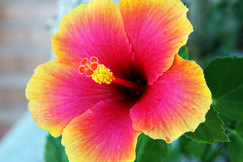 As summer is dwindling, we can all feel the change of season on the horizon. Here in Sonoma County, the past few days have been exceptionally hot and I've been enjoying the last of my favorite cooling beverages before fall comes. Hibiscus Flowers are on that list, as they are cooling, sweet, astringent, and in Ayurveda, pitta pacifying. Hibiscus helps to purify the blood, the heart (physically and spiritually) and also improve skin complexion, the circulatory, reproductive, and nervous system. For a simple hibiscus infusion, let 1/4 ounce of dried Hibiscus Flowers sit in 1 pint of cool water for about 15 minutes. Traditional Medicinals has a great Hibiscus Blend if you'd rather use tea bags instead of loose flowers. Locally, I recommend The Kefiry's fermented "Hibiscus Maya: Royal Flower Elixir" - very refreshing and just sweet enough. Enjoy this last week of summer! Xo  Jill Nussinow, also known as the Veggie Queen has just published her third book, Nutrition CHAMPS. You'll want to keep this piece of inspiration nearby, as it's loaded with plant-based recipes that take you through each food group. Her knowlege and vast experience with vegitarian cuisine is helpful not only when deciding what to cook, but how to make healthy, nutritous eating simple and enjoyable. I had the honor of contributing four spice blends to the book, one for each season. Below is the 'Summer Seasoning Blend.' I highly recommend cooking with fresh herbs and experimenting with your own blends. It makes all the difference to enhance each meal with the tastes you love. Especially, with the bounty of fresh garden herbs this season. You can purchase Jill's book here in print or as an e-book. Happy cooking! xo Nothing beats a refreshing drink to combat hot summer days. I had the pleasure of visiting an old friend and her kiddos in Bellingham, Washington a couple weeks back. After a day of exploring the farmer's market and soaking up the sun we decided to go home, eat some watermelon and chillll out. Wait, better yet, let's drink some watermelon. Oh wait, even better, let's add aloe and mint and make a snazzy watermelon mock-tail! From an Ayurvedic perspective, this is a perfect summer drink. It's cooling, pitta pacifying, and hydrating. Melon's high water content helps bring fluids into the body. This is why it's recommended that melons are eaten on their own, at least one hour away from other foods to avoid bloating and heaviness. Aloe Vera is a wonderful plant that's revered for decreasing inflammation, purifying the blood, healing the skin, and supporting the liver - all of which can get aggravated during the hot pitta season. Adding mint gives an extra cooling, and calming effect. Here is our simple recipe and pics from the endeavor: INGREDIENTS:
One small watermelon 1 cup of Inner Fillet Aloe Vera Juice (Whole Leaf can be too bitter) About 2 Tbsp. fresh mint Blend together and garish with a mint for extra snazze!  From John Doulliard's Hot Tips to Stay Cool this Summer: "Cherries are always my signal that spring is over and summer is here. Their presence signals us that this is the last chance to get spring detox benefits. This doesn’t mean you cannot detox in the summer, it’s just that with each season nature preps different tissues for cleansing, such as the skin and liver. Cherries are unique because they are half berry and half fruit. They look and grow like a fruit, and act like a berry in the body. Like all berries, cherries are major lymph and fatty tissue cleansers of the spring. Summer calls for foods that are higher in healthy carbohydrates (vegetables and some fruits) to drive energy for the long days of summer. Summer is also when we begin to accumulate heat energy. The long days of activity with less rest build heat (pitta) in the body, which reaches its peak at the end of the summer. This accumulation of heat is represented by the red and orange autumn foliage responding to the summers’ heat rising into the leaves of the trees – drying them out in preparation for fall. Falling leaves fulfill a natural detox process of getting rid of the excess accumulated heat."  There is always an excitement in the air when spring arrives. Colorful buds are blossoming, more birds are chirping, and new shoots are pushing their way through the earth. Even though winter here in Northern California was extraordinarily mild, you can feel a freshness and anticipation for the months to come. Today on the Equinox there is equal light and darkness - an end of winter and the beginning of a three month journey to the Summer Solstice. For several years now I've been studying yoga with Shiva Rea and learning about syncing with the rhythms of nature through various practices. Her new book, Tending the Heart Fire, beautifully illustrates the solar and lunar cycles of the year and ceremonies that take place across the world around these "sacred junctures." Living in a culture that in many ways lacks stories and myths that connect us to our environment, I find it even more important that we create some kind of ritual around these transitions. Whatever it may be, I hope we can all encourage each other to pause, reflect back, and envision the season ahead. Here are few reflective questions that might be useful to contemplate as the landscape changes around us and within us: *What needs to be released and let go of before entering this new season? *What seeds are you wanting to plant for the rest of the year? *What dietary shifts are appropriate? (a.k.a. what is the earth providing us with now?) *What lifestyle practices need readjusting? I'll be writing more posts about specific Ayurvedic practices for Springtime. Until then, I recommend taking Maria Garre's webinar on April 2nd or detoxing and staying allergy-free, or reading Dr. John Douillard's article on cleansing. Also, on April 11th I'll be giving a talk at the Center for Inner Health and Stillness on tips for staying balanced in the spring. Follow this blog by email or contact me for more info and updates. Have a wonderful Equinox - may we bring ourselves fully into this new season!  Spring has definitely arrived and I’ve been feeling the surge of activity and inspiration. Lately for me, the point of balance seems to be between holding a larger vision strong and clear while at the same time taking the necessary steps in front of me. Next week I have the honor of assisting and facilitating a week-long Pancha Karma treatment and to work along side a dear friend and colleague, Heather Anthony, the founder of Revive Ayurveda. Pancha Karma is a rejuvenation and purification process specific to each person that's geared towards deep healing from the inside out. In the spirit of spring and cleansing, here is a staple Ayurvedic tea recipe called CCF. Those who are familiar with this blend know that CCF stands for a coriander, cumin, and fennel. These herbs that are also used a culinary spices are combined in equal proportions. They are tridoshic, meaning they're balancing for all three doshas - vata,pitta, and kapha. This tea blend is also diuretic, which helps to clear excess kapha or water accumulation, which can be present this time of year. Sip throughout the day for overall health and digestive support for before, during, or after meals. ~CCF TEA~ 1/2 tsp. Cumin Seeds 1/2 tsp. Corridor Seeds 1/2 tsp. Fennel Seeds *Boil whole herbs together with 1 1/2 cup of water for about 5 minutes. *Steep for 10 minutes or more, then strain. *You can also make the tea with the powdered form of each herb. Mix a 1/2 teaspoon of each with a cup of hot water. Most of us are familiar with that time of day when our energy dips and reaching for sweets or caffeine feels like the only option. Some days it's not possible step away from the desk or task at hand and we have to power through. Last week I had a lot on my plate and got into the habit of having an afternoon snack of chai and chocolate to overcome "the slump." Although it gave me a temporary boost, it wasn't really what I needed. Don't get me wrong, chai and chocolate are wonderful but when they're used to mask deep exhaustion or lack of sleep, it can be detrimental (trust me, I learned the hard way and got sick!). I find that when these habits orbit back around they really remind us to draw upon healthier resources and live the wisdom we know. Luckily, Ayurveda shows us many ways to work with our natural energy. For example, take a look at the 'Ayurvedic Clock' below. The hours between 2-6pm are considered vata time. This is often the time of day when people are more spacey or ungrounded because the air and ether elements that make up the vata dosha increase. This can cause instability in the mind because air and ether have a light, mobile, and subtle nature (based on the 10 pairs of opposites used in Ayurveda to describe the doshas). These hours can be great for creative, artistic activities, and moving the body while mentally strenuous tasks are not recommended because the mind may get distracted easily. If you have a vata constitution, you'll likely need more structure and disipline during the afternoon. If you are on the opposite side of the spectrum and have more kapha, or are generally prone to sluggishness, these hours can be motivating and inspiring to get going and begin projects. Vata hours are also between 2-6am, which is why many people feel a surge of energy in the middle of the night if they stay up past 2am. If you have difficulty sleeping these are often the hours one wakes up. Again, because of the subtle qualities of the air and ether elements can arouse the mind. This is also why many spiritual practices are done in the early morning when the sun is below the horizon because etheric energy is conducive for meditation and expanding consciousness. During the day however, too much air and ether can be deranging and hard on the mind and body if not managed well. Here are some of my favorite tips and tricks for working with vata during the day and overcoming the afternoon slump. ~~~ Tips n' Tricks ~~~ 1.) Walking: Take a brisk 10 minute walk outside to increase circulation andprana, or life-force. Focus on taking deep inhalations in through the nostril and long exhalations out through the nostrils. Even if you are in a busy city, observing the trees, the sky, the birds and other aspects of nature can help calm the nervous system and settle the mind. 2.) Laying Down: If possible, lay down and close your eyes, even if it's just for a few minutes. Even better, lay down outside and have your sacrum touch the earth. Depending on how much time you have, a restorative relaxation practice like yoga nidra, (also known as yogic sleep) is great when you need a temporary rest. I have found that taking a break and recharging my system in this way makes for a much more productive day. 3.) Power Snack: When life demands you to keep going and your appetite is strong, have a high-protein, or high-energy snack. Here is a nice "treat" that will definitely leave you feeling alert and energized to get things done! Dates and almonds are ojas building, meaning they increase our vitality and immunity; while the herbs in this chai recipe are grounding, strengthening, and assist digestion. Cacao and maca add an extra kick, as they are both super-foods for endurance. Almond Butter, Cacao Bean Stuffed Dates *Cut dates in half and take out the pit. *Fill with a small amount of almond butter and top with 1 cacao bean. Rosemary's Garden - Nourishing Chai (non-caffeinated) Contains powdered organic/wildcrafted: Maca, Ashwagandha, Shatavari, Eleuthero, Licorice, Ginger, Cinnamon, Cardamom, Clove, and Black Pepper. *Add 1-2 teaspoons for each cup of water. 4.) Aromatherapy: Use uplifting essential oils like peppermint, pink grapefruit, or lemongrass to bring alertness and clarity. If you are feeling flustered or hyper (which tends to happen during this time of day) try grounding aromas like vetiver or jatamansi that are in Floracopia's Vata Essential Oil Blend. Use an essential oil diffuser if you have one. Or, do a simple 'palm inhalation' by placing a drop or two of oil on the palm of your hand, rub your hands together, bring your palms up to your nose, close your eyes and inhale. 5.) Creative Pursuits: This is a great time of day to dance, make art, play or listen to music. If you are working during these vata hours, try to work on the more "fun" tasks that don't require as much mental focus. Also, take breaks away from your computer or internet browsing (a very etheric activity) during the afternoon to stay as grounded as possible. I recommend experimenting with these suggestions and see what works for you. Most importantly, it's about bringing awareness to these cycles and our varying energy levels throughout the day so we can recognize when it's time to engage and step forth, and when it's time to take a step back, recover, and conserve energy. Of course, we are all works in progress and sometimes fall into old habits, but it's never too late to self-correct. Following a proper daily routine optimizes health across the board. In this case, the ultimate goal is being able to come home at the end of a long work day and instead of zoning out, having enough energy to cook, spend time with loved ones, and do enjoyable things.
I hope this has been helpful. Good luck! ~Camina Valentine's day is here! It's always been my favorite holiday (I know, gross!). Not because all of the cheesy hallmark madness of course, but because of the sweetness that comes from simple gift giving. It may also have something to do with my adoration of chocolate, homemade cards, and my birthday beingexactly nine months later (I know, gross!). Whether or not you are pro or anti-Valentine's day, you can't go wrong with expressing love and implementing self-care practices that keep your heart open and healthy. Here are some of my favorite Ayurvedic practices for heart health: 1.) Self-Abhyana - otherwise known as a warm oil lymphatic massage. Use an oil that is appropriate for your constitution (more on this in later posts) and make long strokes up your arms and legs towards your heart to help move the lymph. Create friction around your joints using a circular motion to build heat and support circulation. 'Snehana' in Sanskrit means oil, but it also means love. Oiling the skin has traditionally been a practice of offering love to the body, making it a great time to say affirmations, chant mantras, and think positive thoughts. 2.) Rose Tea - Rose is cooling, anti-inflammatory, antidepressant, and a aphrodisiac. It has an infinity for opening the heart and bringing mental clarity. It's considered a 'sattvic' herb, meaning it brings forth devotion and invokes higher states of consciousness. You can make your own tea blend by mixing rose and chamomile for example, if you are going for an extra calming effect. Or try Tulsi Rose tea bags from Organic India. Tulsi is an adaptogenic herb which his great for relieving stress and also pairs well with rose. 3.) Hrid (Heart) Basti - an Ayurvedic treatment involving a warm medicated oil and milk decoction placed on the heart, contained in a dough dam. This healing treatment is deeply nurturing, opens the heart on an energetic level, as well as strengthens and regulates cardiac function. Some of the herbs used include rose, hawthorn berry, lavender, ashwaganda, skullcap, and St. John's Wort. The dough that's used has an astringent quality which helps to draw out impurities from the skin. It also rests somewhat heavily on the chest, increasing awareness to this region of the body. 4.) Bow Pose - opens the chest and 'anahata' (heart) chakra. To do this posture, lay on your stomach and reach your arms back, grabbing onto the outside of your ankles. With a deep inhalation draw the torso and legs up off the floor simultaneously by kicking into your hands. Hold the pose for a few breaths and lower slowly on an exhalation. Lay back on your stomach, resting your forehead on the backs of your hands, or go into 'child's pose' to recover. 5.) Cuddling - we all know human touch is important for health and now more and more 'research' is showing how cuddling increases oxytocin and is a remedy for depression. In Ayurveda, human touch and sex are emphasized in the cold, winter months. Just as the trees are bare and exposed, we too need more comfort and nurturing. Get your cuddle on! 6.) Salt foot soak - although this does not directly link to the heart, soaking the feet is overall relaxing and can lower the heart rate. Regular foot soaks followed by oiling the bottoms of the feet, can help relieve deep-seated stress and promote restful sleep; especially when using quality salts like a high-trace mineral epsom or pink himalayan. Adding essential oils and rose petals are a definate bonus to any food soak. Since rose essential oil is quite expensive, a friend just shared with me a nice floral and sweet alternative blend that also works with the heart: 'Champa' & 'Cardamom.' 7.) Heart Breath - place your hands on your heart center, either in prayer position or hands placed one on top of the other. Close your eyes and take several deep breaths. Feel your heart beat and listen within. Making this connection can help slow down our racing mind and tune us in to what matters most. Even if you only have few minutes time, breathing in this way can be highly beneficial and reset your whole approach to the day.
I hope you enjoy these 7 practices, and have and have a wonderful Full Moon Valentine's day. Love it up! A friend of mine is traveling to Laos and asked what people would recommend her to bring on a long flight. Thieves oil! Thieves oil all the way for me. It's my #1 travel savior. I always keep it by my side and can attest to numerous occasions it has helped me fight off sickness or kept me healthy in unusual circumstances. Before getting on an airplane I usually douse myself with it and if I'm feeling under the weather while traveling, I'll put a few drops on my chest or swollen glands before taking a hot shower. If you have sensitive skin, putting a few drops on the shower floor also works to create an aromatic steam. The smell is strong so if you are not familiar, be warned! The name 'Thieves Oil' comes from thieves and grave robbers during the 15th century that used this oil blend to ward off the plague. You can imagine this stuff is powerful. It boosts the immune system, is antiseptic, antibacterial, and antiviral. Not only is it great for travel, but also for winter season cold/flu prevention. You can put a drop on your hands as a natural hand sanitizer (make sure not to rub your eyes!) or just take a deep inhalation before or after being in a crowded or contaminated space. Make your own: ~Thieves Oil~ 4 parts Clove Essential Oil 4 parts Cinnamon Essential Oil 2 parts Eucalyptus Essential Oil 1 part Lemon Essential Oil 1 part Rosemary Essential Oil **Other optional immune boosting oils: Tea Tree, Sage, Lavender, Thyme **Use a base oil like sesame, almond, or jojoba to make the blend last longer. Or buy it: Young Living has trademarked this oil and has created a variety of products, like household cleaners, hand-wipes, sprays...etc. Floracopia is my favorite essential oil company and although they don't have a 'Thieves Oil' per say, they do have a Wellness Collection of six essential oils that have the same effect.
Check out the wonderful work my friend Jessi is doing in Laos on her 'blog'. Hey y'all,
It's been a while since I've made any blog posts. This site has been pretty inactive the past couple years - you know how it goes, false starts here and there blah blah blah. So here I am, diving back in. Extra motivating factor: tomorrow night I'm giving a talk on 'Ayurvedic Practices for Winter' and wanted to invite any Sonoma County folks to join. It will be from 6-7:15pm at the Center for Inner Health and Stillness in Santa Rosa, Ca (see below). Any feedback on the blog (or just in general) is welcome as things are still developing and gearing up. I'm not totally sure where this is going to take me, and that's always the most exciting part. Wishing everyone a happy second New Moon of the month and Chinese New Year of the horse tomorrow. Let's set some strong, clear intentions! Love, Camina According to Ayurveda, it's important to bring in warming spices during the winter to increase circulation and prevent congestion. Sipping on an herbal tea is a great way to incorporate medicinal herbs as well as stay warm. Here are some of my favorite blends for this season:
*Herbal Chai 4 teaspoons cardamon pods 2 teaspoons whole cloves 1 teaspoon black peppercorns 5 sticks of cinnamon 2 teaspoons whole star anise 1/2 teaspoon salt optional: add sliced fresh ginger Boil 4 cups of water and add whole spices (except cardamom). Let simmer 15-20 minutes and keep the lid on the pot to contain the essential oils. Turn off the heat, add cardamom, and let sit for 10 minutes. Lastly, strain out all of the herbs and enjoy! Here is a spiced tea variation with dry herbs from Dr. Lad's, 'Complete Book of Ayurvedic Home Remedies.' This blend is great for increasing your digestive fire after a heavy meal. 1/2 teaspoon dry ginger 1/2 teaspoon cinnamon pinch of clove Boil in a cup of hot water for 5 minutes and drink as tea. No need to strain. For those who prefer to use teabags, I recommend Traditional Medicinal's Ginger Aid and Yogic Tea's Chai Rooibos. One of my favorite projects this spring was putting in my first culinary herb garden. There's nothing like harvesting fresh herbs from the garden to spice up any meal. It's amazing how quick, easy and low-cost this project was. The soil and bricks were free from Hayes Valley Farm and the starts were just a few dollars. We decided to put in herbs that were pretty low maintenance like mint, rosemary, basil, thyme, and sage. I hope this has inspired y'all to get your hands in the dirt and build a spiral of your own. It doesn't take a lot of work and it beats paying for fresh herbs a the grocery store that go to waste! Check out 'this site' to learn more about herbspiral design, growing
information, and use of each herb. |
"harmonize with nature, walk a path
of balance" ❤ Newsletter ArchiveSpring/Summer 2024
Winter 2024 Summer 2021 Spring Retreat 2021 Spring 2021 Winter 2021 Spring 2020 Winter 2020 Summer 2019 Winter 2019 Autumn 2018 Spring 2018 Winter 2018 Fall 2017 Summer 2017 First Seasonal Newsletter Categories
All
Archives
June 2024
|


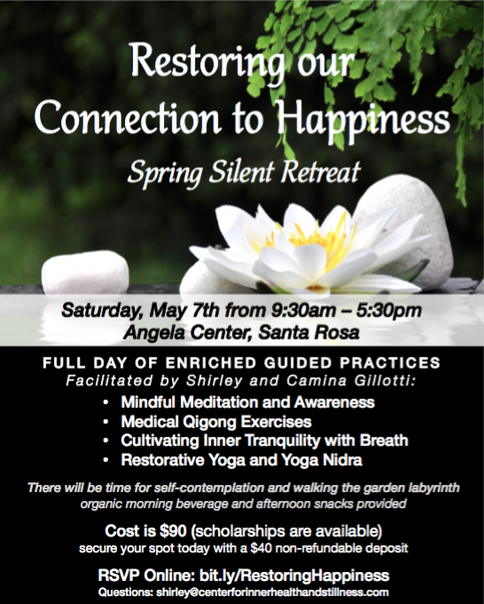


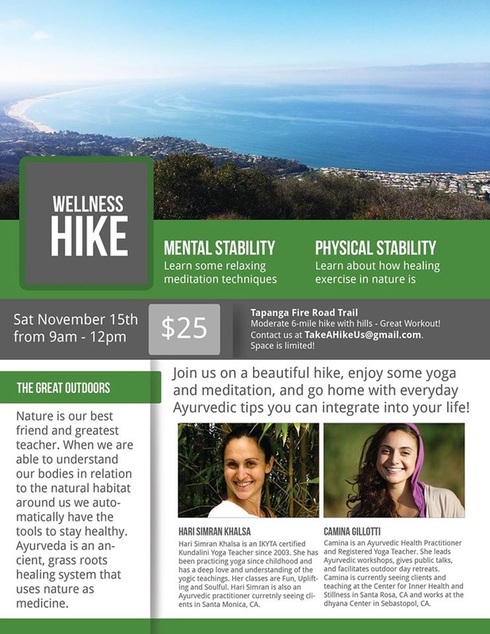


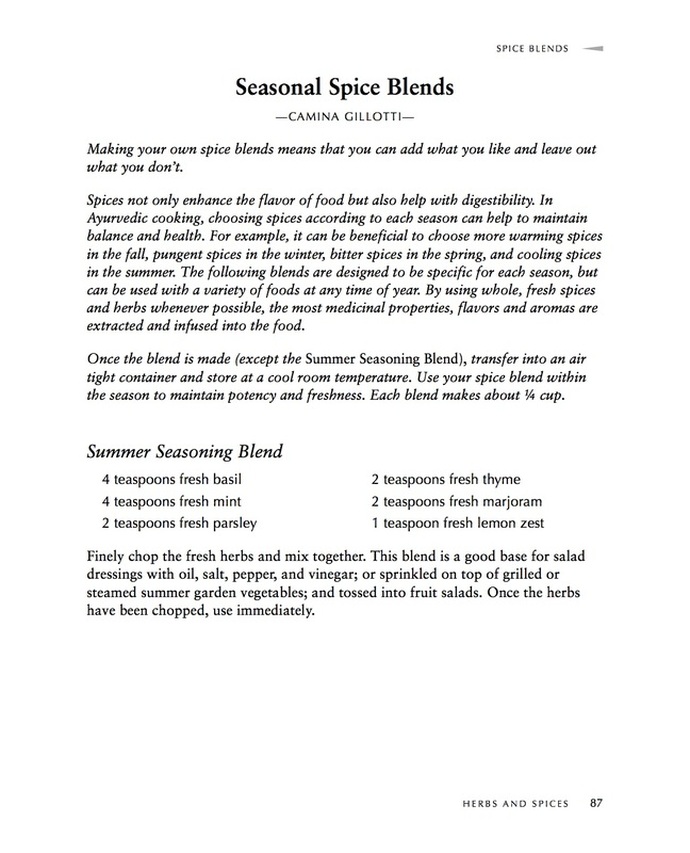





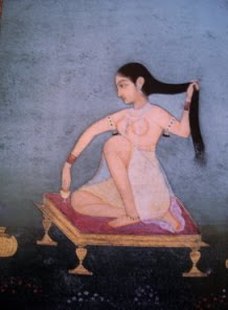






 RSS Feed
RSS Feed